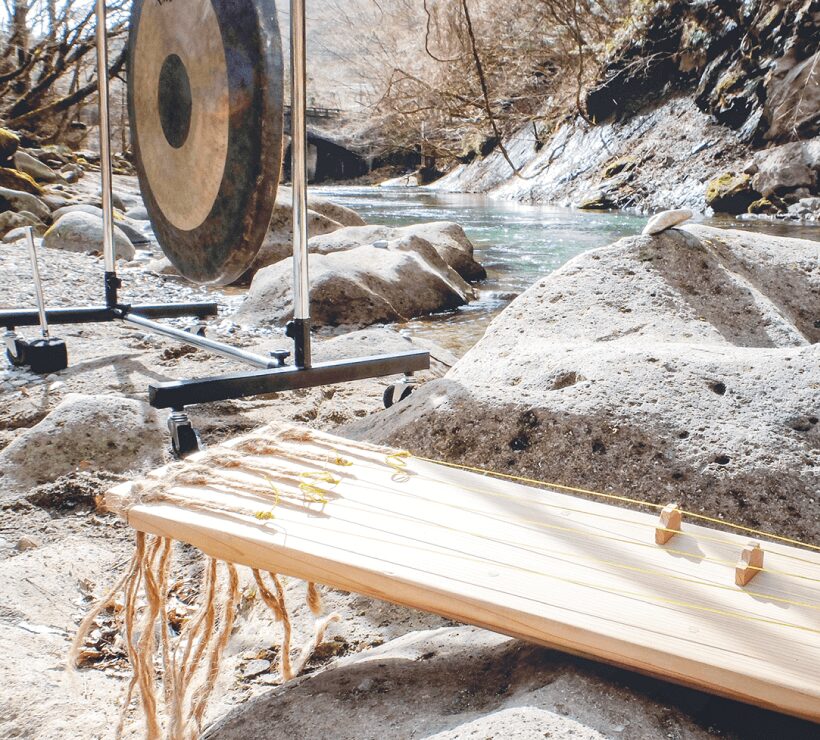
The origins of Gagaku are said to trace back to ancient China (and also to ancient ceremonial music in Korea and Vietnam), making it one of the oldest forms of music in East Asia. It was transmitted to Japan around the 5th and 6th centuries, having accumulated the influences of the Silk Road, the reverence for gods and Buddhas, and various philosophies and ethnic characteristics over the ages.
Prince Shōtoku (574-622 CE) established Japan's first state temple, Shitennō-ji, in 593 CE and made Buddhism the official state religion. He also advocated the principle that "foreign music should be used in Buddhist ceremonies." The "Gagakuryō" was established to preserve and transmit both the the ancient Japanese performing arts, which have been preserved and passed down through the Imperial Court that venerates the gods as ancestors and the newly introduced foreign music.
Gagaku as we know it today was completed during the Heian period (794-1180 CE). The fact that music over 1,200 years old is still being performed today in national rituals, ceremonies, and weddings is nothing short of extraordinary (Note: The history of individual instruments goes back even further, and we should explore this in more detail).
Gagaku carries with it the essence and philosophies of multiple eras, from its origins in China, Korea, and Vietnam to its development in Japan.
Side Note: It's important to highlight that while Gagaku was introduced to Japan, the original forms in China and Korea faded over time and were later revived. Japan’s Gagaku, therefore, represents the oldest and most continuous form of this music.

Composer Toshiro Mayuzumi, a representative figure of post-war Japanese classical and contemporary music, described Gagaku as follows:
“Three winds, three drums, two strings—ryuteki(dragon flute) and hichiriki perform a heterophony (where the same melody is played simultaneously but with variations), while the shō supports from above with dense harmonies. The arpeggios of the biwa and koto color the rhythmic flow, with taiko and shōko adding accents, all led by the Tsuzumi. This ensemble form…”
When listening to Gagaku, one can sense that each instrument—ryuteki(dragon flute), hichiriki, shō—is playing the same melody, overlapping to create a single composition. The thin, transparent layers of sound generate a mysterious and profound resonance.
However, this layering isn’t recorded in sheet music. It’s passed down through the unique "ma" (space、interval…? It's a difficult word to express) and "breathing" of traditional Japanese music, creating layers that are felt rather than explained. Even when asked, the performers say they can’t quite explain it. This defies logic. Unlike Western classical music, where vertical lines are strictly aligned, Gagaku does not require such alignment.
It’s not that the music "shouldn't match," but rather, the sounds of each instrument overlap like natural phenomena, creating a sense of wonder and depth.
Even though I(About Atsuko as a writer) am not an expert in music, I can say that Gagaku feels like something beyond human comprehension—more like being immersed in a space than simply listening to music.
There’s even a story that if the Gagaku piece "Bairo" is performed seven times and the sound called " Shamoune or Shamounokoe" is heard, victory in battle is assured.
Gagaku researcher Seiko Tanabe once said in an interview:
“Today, science might be able to explain these phenomena in terms of overtones or frequencies.
But in those times, people needed to attribute reasons to these mysterious phenomena. The various legends surrounding Gagaku are fascinating.”

Mayuzumi further elaborates that the people who created Gagaku deliberately allowed "clashing" sounds and consciously retained dissonances that could have been easily avoided. He speculates that this was because they possessed an incredibly refined sense of beauty, able to appreciate the subtleties arising from slight variations in pitch.
Despite some changes, today’s Gagaku remains almost identical to Heian-period Gagaku.
This historical, cultural, and musical layering in Gagaku allows us to "warp" back to the sensibilities of the people who lived during the Heian period.
I believe that the combination of Atticus Ross's magnificent music and Japanese gagaku has created music with depth that transcends genres.
This synchronization of film and music, Gagaku and soundtrack, cinema sound design—there’s much more to explore.
written by Atsuko Aoyagi / ao.Inc.
#dailythoughts #traditionaljapanesemusic #composition #gagaku #composinggagaku #nonmusic #gagakuperformance #filmmusic #gagakutan #gagakutales #shogun #layer #mysterious
